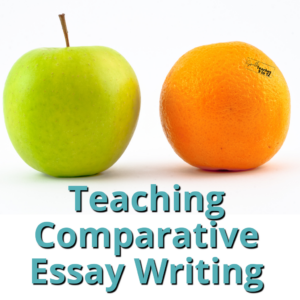Sharing is caring!
Throughout the year we use a variety of desk set ups to help with solo, paired, and group work.
But like many of you I share a classroom with other teachers. This means I often have to reset the room at the end of a class period.
And let’s be clear moving a ton of desks in a short period of time is not a solo job.
So I like to do a little thing we call musical desks. It’s a little like musical chairs but also not at all!
How does it work?
Like anything in class a new skill takes practice. And moving desks into different formations is a skill so we practice.
- I explain the formation and sometimes have a diagram on the board to make it clear for the class.
- I turn on a song – student choice usually.
- We move the desks. (And take note of where we are in the song.)
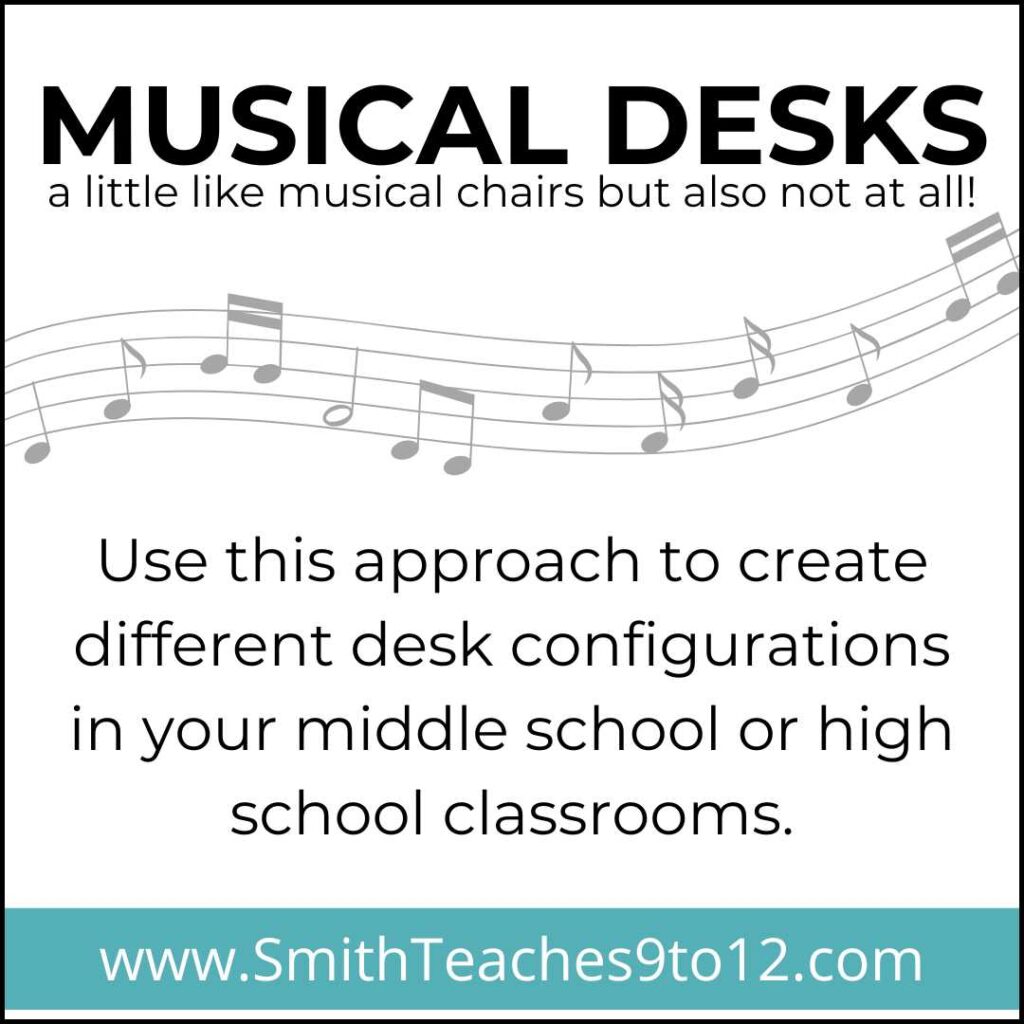
Early in the year it does often take the whole song to move the desks at the beginning and end of class. But they get faster and often by mid-October we’ve made great progress with timing and have mastered at least 3 formations.
Options for configurations
Regular rows or in pairs and in rows is where the classroom usually starts and ends. We make use of this sometimes for a lesson kick-off and then shift to a different “shape” within the period but making sure to reset to the original formation for the next class.
I appreciate the use of pairings as a baseline for a class set-up since it helps to facilitate some peer support and collaboration.
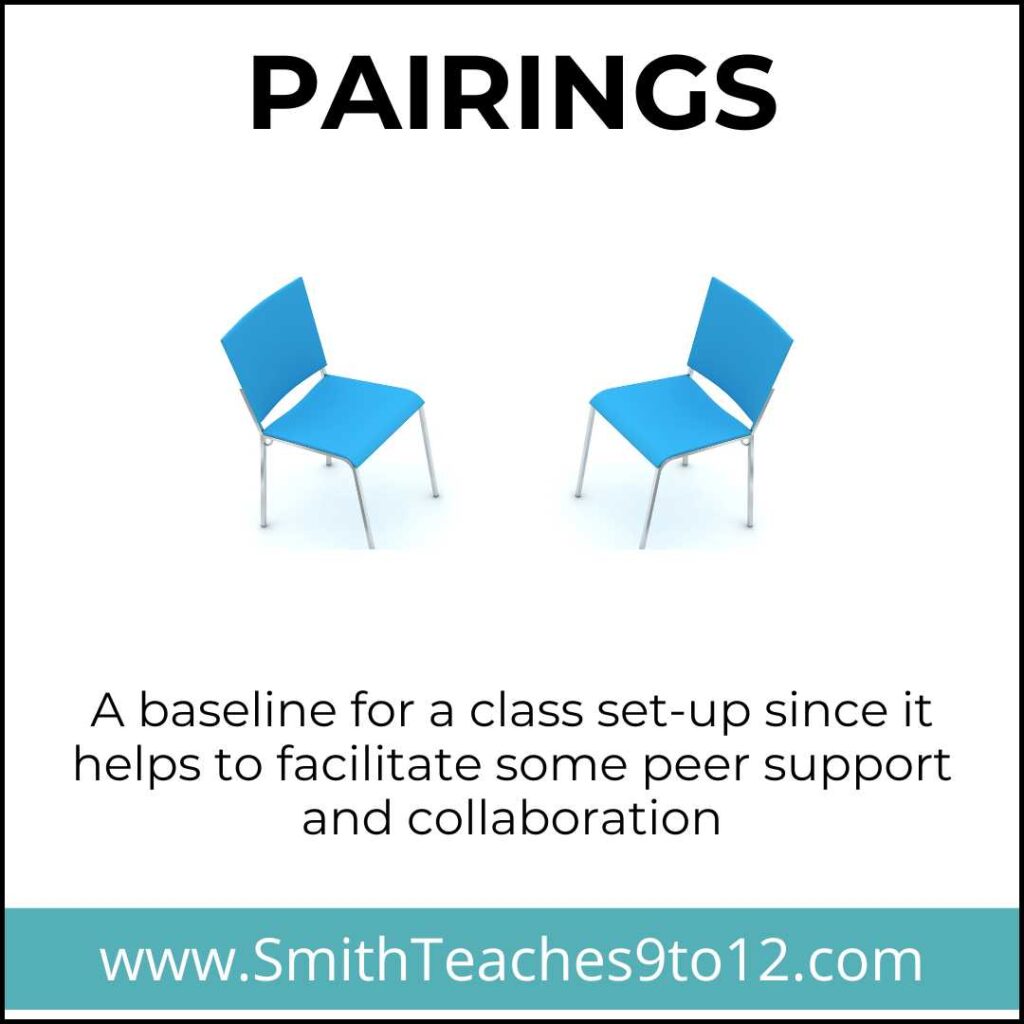
However, there are other configurations that I really like to use for different purposes in class. Here are my top 3:
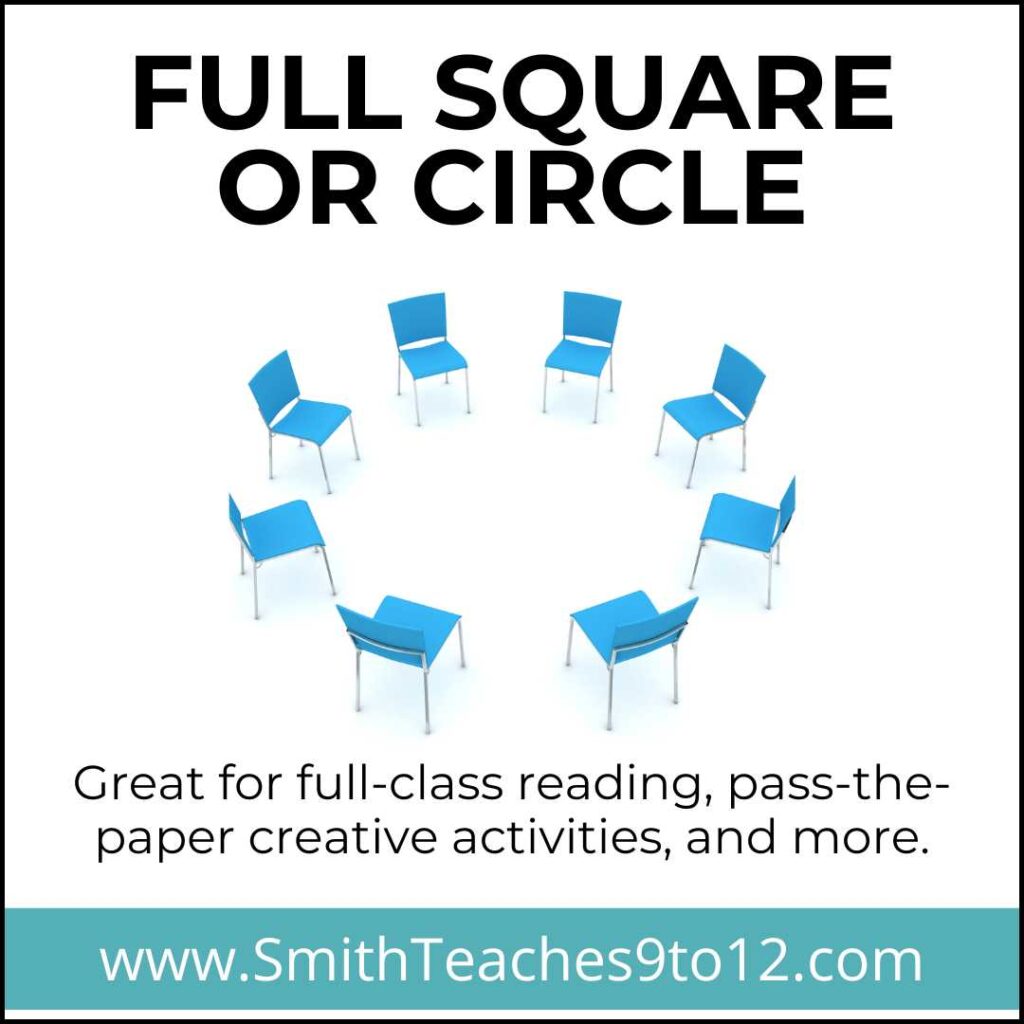
Full square or circle: I use this most often when we’re doing a group reading or some sort of pass-the-paper activity. I use this set-up for creative writing where students build on a prompt and then another student’s sentence/paragraph – this could be about extended learning from an already studied text such as a short story or novel. Another one that’s popular with my students is for vocabulary work where students add content and context for different terms we’re studying.
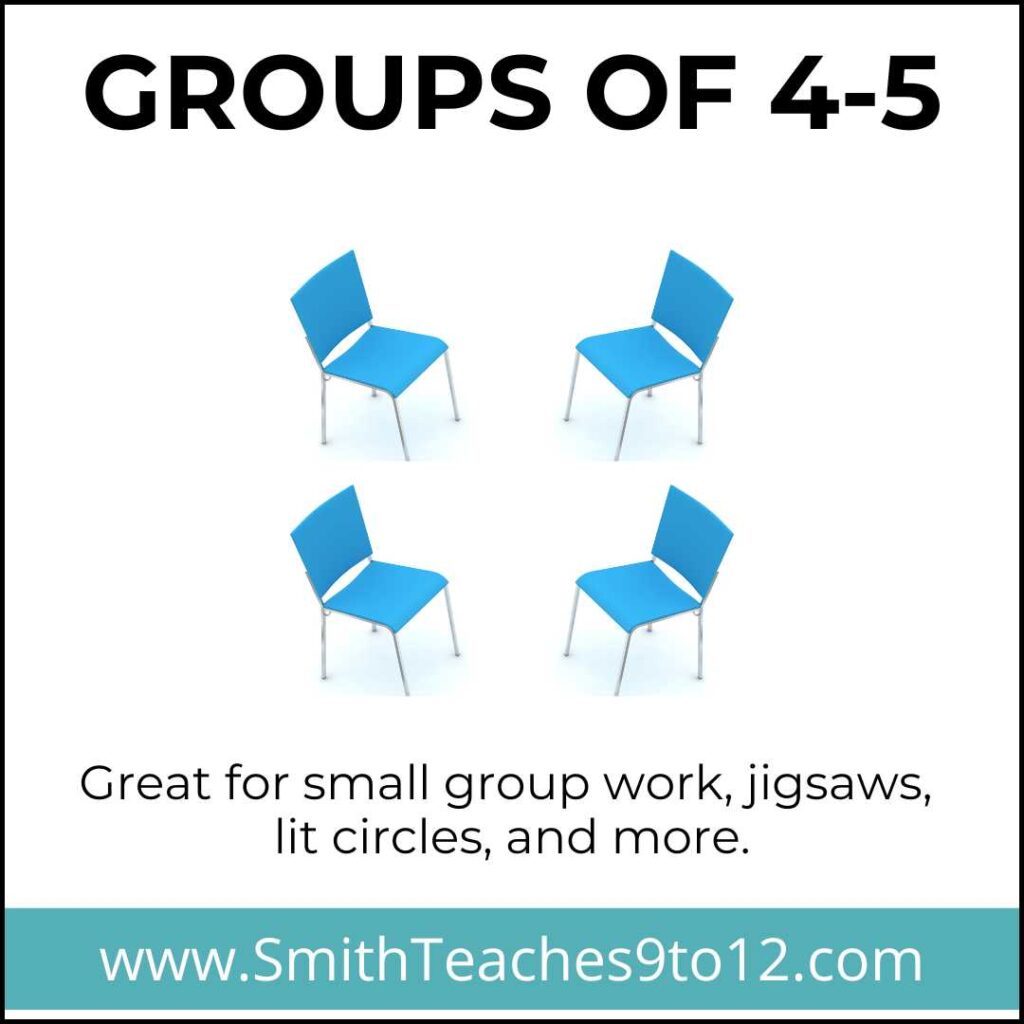
Groups of 4-5: I use this option most often when we’re in full group mode for things like jigsaws or lit circles. I like that this promotes collaboration and peer support. With desks, turn them towards each other to create a large square so that it opens up a wide desk space for work such as using chart paper for group notes. Adding a fifth desk is often an addition to the end but this isn’t a dealbreaker for collaboration.
A solution for this fifth desk is to introduce a bit of movement during the activity. Get students to shift desk spots after a short period of working time so the person in the 5th desk then gets added more seamlessly into the group; giving each person a chance to sit in the different seats. The use of movement also means that students stay engaged… sure they may sigh a bit and roll their eyes (#teenagers – ha!) but it saves the activity from getting stale too quickly.
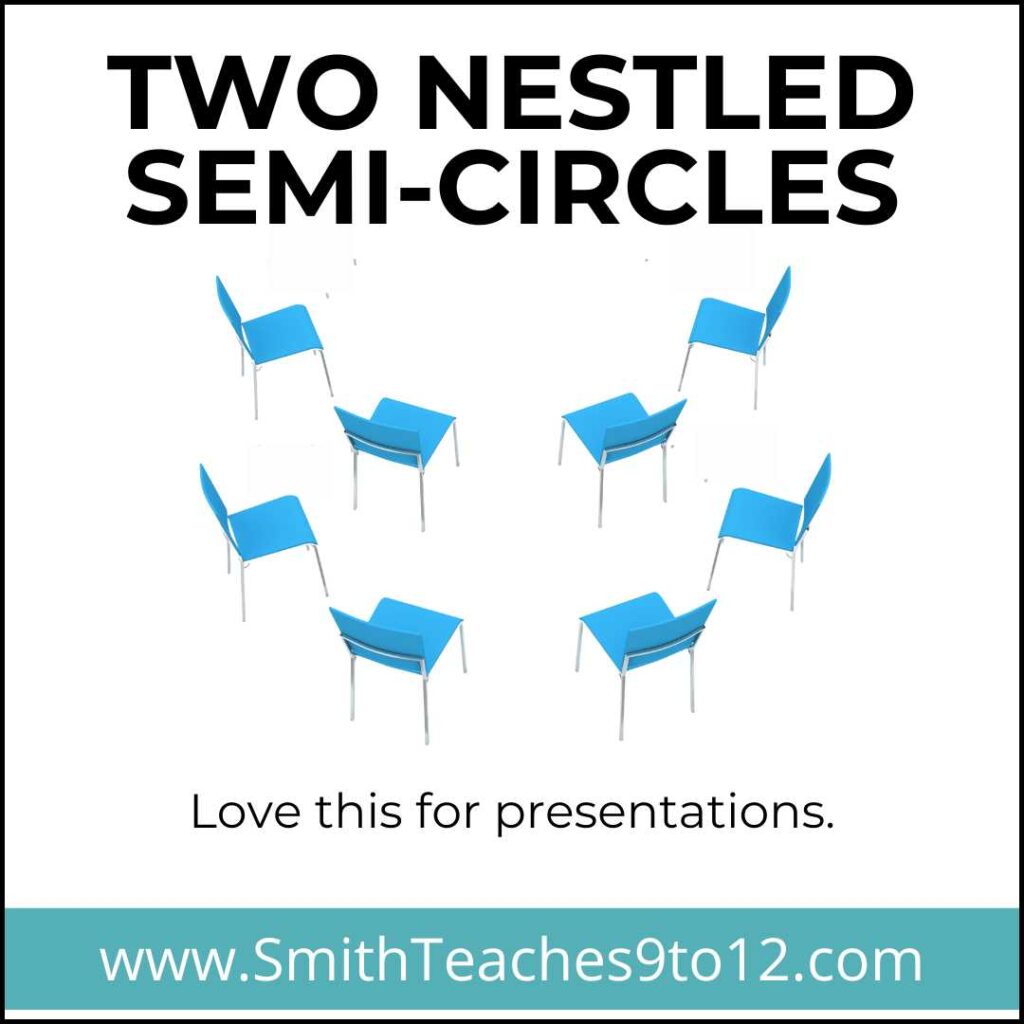
Two semi-circles nestled within each other: Love this for presentations. Students present to the class with an attentive audience. Presenters sit in the first row to make it easier to come up. If there are a fair few presentations then I get students to take a break and switch rows since it gives them a chance to move for a minute and also means that front row is focused!



